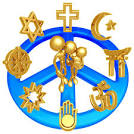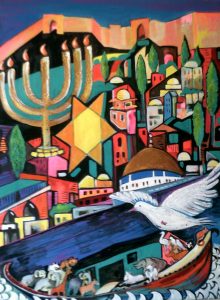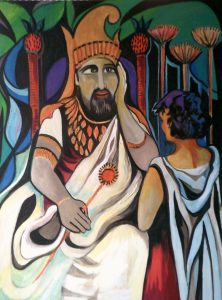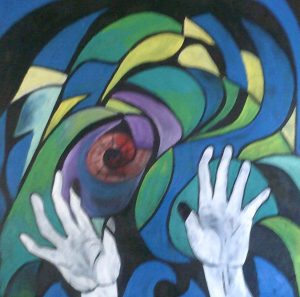 .
.
What follows is the Introduction to my new book. I have written a lot on trauma and its impacts. Here I want to look at historical trauma with a particular focus of the persecution of Jews. It is a big project and this is only the beginning.
_______________________________________________________________
The world has a torrid history were wars, torture, massacres and genocides that have been a prevailing feature of humanity. For many evolving societies aggressive enemies came and went, settlements were disrupted, people were slaughtered, then there was reprieve, a new social order was created and the struggle to exist started over again. Some societies lasted for centuries, while others barely got off the ground. For the Jews the story is no different, there has been little peace throughout their recorded history. No sooner did the Jews find a settlement, there was always someone to push them out. The Jews have found themselves perpetual wanderers and stateless. However, the notion of the Wandering Jew raises an important question. What does it take to survive in a hostile environment? Unlike most other civilisations the Jews had survived historical and ongoing onslaughts, with many generations living in exile.
For Jews the quest for a homeland has been an historical struggle. Yet, despite their continuing exile the Jews have maintained a close unity and they have multiplied in their numbers. One might suggest that for the Jews faith and patience has paid off. Indeed, after being dispersed across the medieval and modern world for 2000 years, the Jews finally managed to acquire a homeland when in 1948 the separation of Palestine gave birth to the State of Israel. Nonetheless, life in Israel appears tenuous. The Jews must continually fight surrounding enemies to maintain what they have. Or, to put it differently Jews are still dealing with daily persecution, only it is happening on their own territory.
Against this backdrop, the Jews are far from a homogeneous people, they occupy many different parts of the world and they hold profoundly different beliefs and practices. The variations in Jewish political and religious views often sees Jews divided among themselves. For example, what one might learn and practice in one synagogue might not be appropriate in another. Jewish politics are even more complex than Jewish religion. Jews are generally well meaning, caring for others is inherent in the Jewish faith. Nonetheless, the nation of Israel is constantly at war with its neighbours. Moreover, what is regarded as a homeland for Israelis is not a homeland for all. Many non-Jewish Israelis are marginalised in what has become solely a Jewish State. With this in mind, a history of persecution against the Jews must take account of the reflexive impact manifest on the wider social setting.
Nonetheless, the tale of Jewish survival in the face of historical and ongoing persecution is compelling and it needs to be accounted for in a discipline of its own. In terms of the post-World War Two Holocaust studies this has happened, but persecution has a long history that predates the modern European Holocaust. In addition, there are many sociological, psychological and historical texts that deal with violence against Jews, such as that which occurred in the pogroms. There are also individual examples like the Leo Frank Affair of 1915,[1] but generally speaking, Jewish people do not like to dwell on the painful past, rather they look to the future with hope and anticipation.
Violence is universal and racial violence, albeit insidious, has always taken a strong hold in historical and modern societies. Before embarking on this work, I posted a number of comments of social media to suggest that violence is NEVER acceptable. To my dismay, the majority of people responded in disagreement. Some people argued that violence was inherent in humans because we are all animals. Others, approved of violence to create change. While many more social media cohorts just put it down to frustration, whereby violence offered some kind of psychological recompense. It appears little has changed since the time of our ancestors.
I might have taken a broader view of persecution as my topic, but my work is both personal and political. The work aims to be a concise account of the persecution against the Jewish people. The Jews are significant in this context because the have survived for more then four thousand years, against all the odds. My account is far from exhaustive, it is governed by time and space. My objective is to bring the consequences of extensive persecution to mind and to argue that the impacts of persecution are not just long term, they are inter-generational and can last for centuries going forward. Further, we cannot hope for a peaceful future without acknowledging past mistakes.
My interest in this topic goes back to my own upbringing east of London after the Second World War where there was a wave of post-war anti-Semitism. Persecution against Jews did not stop at the Nazi death camps. There were those in Britain (and elsewhere) who had a misguided view of Jewish life and practices. They blamed the Jews for their own misfortunes. Indeed, they blamed the Jews for all the problems in the world. These views were underscored by numerous myths that circulated, not just in London, but around the world. One such example was the Protocols of the Elders of Zion. This fraudulent document has been the most notorious and widely distributed antisemitic publication of modern times. The aim has been to discredit Jews and to spread hatred towards the Jewish people. It has been repeatedly discredited, but continues to be circulated today, especially on the internet.[2] The individuals and groups who have used the Protocols are all linked by a common purpose, to persecute and eliminate the Jews by spreading lies. The document alleges that there is a conspiracy to bring about a global take-over by a group calling themselves the Elders of Zion. [3]
In 1903, portions of The Protocols of the Elders of Zion were serialized in a Russian newspaper, Znamya (The Banner). The version of the Protocols that has endured and has been translated into dozens of languages, however, was first published in Russia in 1905 as an appendix to The Great in the Small: The Coming of the Anti-Christ and the Rule of Satan on Earth, by Russian writer and mystic Sergei Nilus. Following the Russian Revolution of 1917, anti-Bolshevik émigrés brought the Protocols to the West. Soon after, editions circulated across Europe, the United States, South America, and Japan. An Arabic translation first appeared in the 1920s. Beginning in 1920, auto magnate Henry Ford’s newspaper, The Dearborn Independent, published a series of articles based in part on the Protocols. The International Jew, the book that included this series, was translated into at least 16 languages. Both Adolf Hitler and Joseph Goebbels, later head of the propaganda ministry, praised Ford and The International Jew.[4]
False accusations and untenable myths about Jews culminated in angst on the streets of London with extensive property damage and violence. Secular Jews were not excluded from this persecution and many families felt they had to hide their identity, especially if they had children in schools. I have documented my own story elsewhere, so I will not elaborate.[5]
In the period between the 1990s to 2000 violence against Jews appeared to escalate. There were direct attacks across Europe on Jews by Islamic extremists. These attacks reached a pivotal point on September 11 when a series of four coordinated terrorist attacks by the Islamic terrorist group al-Qaeda was carried out against the United States., the country know to have more Jews than anywhere else in the world. The attacks occurred on the morning of Tuesday, September 11, 2001, they killed 2,996 people, they injured over 6,000 others, and caused at least $10 billion in damages to infrastructure and property. [6] In the aftermath, many people died from related illness such as cancer and respiratory diseases. Many more suffered severe mental illness. As a result, numerous studies began on the impacts of trauma in the next generation beginning with women who were pregnant at the time of the attacks. [7] Comparisons were made with the impacts of the Holocaust on the children of surviving Jews.[8] In the months and years following the attacks, research on victims of organized violence and torture suggested that prolonged severe trauma produced long-term psychological effects that persisted even into old age. Further studies highlighted the inter-inter-generational consequences.[9]
Many comparative epidemiological studies have been conducted to investigate the long-term consequences of organised violence, including political persecution. Studies revealed a lack of appropriate information on the consequences, especially in relation to Eastern Europe and persecution in what were formally communist countries. Many of those persecuted were Jews. The extensive review of empirical support for the co-occurrence of complex symptoms led to the conclusion that this was mainly the consequence of prolonged, repeated trauma that usually occurred during captivity, such as in prisons, concentration camps, or labour camps. Studies on Holocaust victims became crucial for understanding the broader incidents of political violence and the long-term effects. However, the inter-generational consequences stopped short of examining more than one or two generations when we know that knowledge, culture and in some cases, mental trauma can last much longer, while travelling through a chain of inter-generational signifiers.
Information about the persistence of post-traumatic sequelae into old age came mostly from investigations on Holocaust survivors and on POW-s in World War II. Most studies found that survivors suffered from long-lasting trauma. In addition, more recent studies that applied the diagnostic criteria for post-traumatic stress disorder (PTSD) reported the persistence of post-traumatic symptoms and high rates of related co-morbid disorders in many victims who developed PTSD in the aftermath of the trauma, for 40–50 years after the end of World War II and up into old age. Prospective research also focused on the late effects of combat exposure, showing relatively few PTSD symptoms in survivors. [10]
It has been argued that traumatised individuals may suffer from various combinations of symptoms over time and that this pattern of symptoms reflects the adaptation to psychological trauma on the cognitive, affective and behavioral levels, particularly when this has occurred early in life. Clinical investigations of Holocaust consequences late in life revealed an increase in the severity of depressive and somatic symptoms as an outcome of the unsuccessful emotional processing of the trauma. Indeed, studies suggested that late life might be a period of increased vulnerability in the aftermath of severe trauma. [11]
There is still much to learn about inter-generational trauma and its historical consequences. The aim of my work is to draw attention to the historical events of persecution against Jews and its continuum from ancient and medieval times to current forms of modern-day anti-Semitism. In as far as possible I have attempted to keep to a chronological order, but since the data is voluminous, I have chosen to pinpoint the most significant incidents. The work highlights key events that have given meaning to Jewish life and faith; for example, the meaning of exodus, diaspora, wandering, tabernacle (Synagogue) and Israel (homeland). The enduring hope and resilience of the Jewish people is to be applauded. Ancient and modern Jewish history has made hope a prominent feature of Jewish life and identity, which holds value for everyone, but there is also a cautionary tale. Jewish life is involved in an identity politics that is both emancipating and constraining. The tensions become self-evident in modern day Jewish life and worship and in some cases are perceived as segregation.
The timing of my work is also important. The mood against religious groups, especially in the wake of numerous global terrorist attacks from extremists, is strong. One just has to consult the media to view a growing anti-Semitism across the world. In the United states journalist Isabel Fattal writes “American anti-Semitism is as old as America itself”. [12] The statement followed the 2018 shooting at the Tree of Life synagogue in Pittsburgh, where eleven people were murdered and six more were injured. It was believed to be the deadliest attack against the American Jewish community in U.S. history. The massacre was an unprecedented act of violence against American Jews, but it was by no means the first time that anti-Semitism had manifested in deadly violence against Jews in the United States. Jews in America have a history of persecution. Fattal writes:
For decades, American Jews have faced social discrimination, acts of vandalism against sacred spaces, and, in recent years, social-media harassment—and the number of reported anti-Semitic incidents has risen dramatically since 2016. Fatal attacks against American Jews have been far less common than these other forms of discrimination. And yet American history is full of episodes of physical violence against Jews and Jewish institutions. [13]
The story is the same the world over. I hope that by bringing together the history of persecution against the Jewish people, it will shed light on the notion of persecution as a psychological and physical continuum that we cannot ignore. It is not correct to say that history repeats itself, but it is known that the past revisits us in numerous forms, often in aberrant behaviour which gets passed from one generation to another unless something breaks the cycle. I hope from my work readers will have a better and more concise view of what Jews have endured and what they continue to face in their daily existence. There will undoubtedly be questions. How we bring an end to persecution is another matter; but without knowledge we cannot even begin to think about where to begin.
[1] In 1913, a 13-year-old child laborer at an Atlanta pencil factory named Mary Phagan was found dead in the factory’s basement. Leo Frank, the Jewish superintendent of the factory, was convicted of the crime and sentenced to death. In 1915, Georgia’s governor commuted Frank’s sentence to lifetime imprisonment due to a lack of sufficient evidence; Frank was abducted from prison and lynched. Despite the consensus among historians that Frank was innocent, as well as the corroborating claims of a witness, white-supremacist groups today continue to implicate Frank in Phagan’s murder. The controversial Frank case is credited with inspiring the resurgence of the Ku Klux Klan movement; it also played a role in the creation of the Anti-Defamation League in 1913. Details can be found at United States Holocaust Memorial Museum. https://encyclopedia.ushmm.org/content/en/article/protocols-of-the-elders-of-zion Retrieved 28th April, 2019.
[2] United States Holocaust Memorial Museum. https://encyclopedia.ushmm.org/content/en/article/protocols-of-the-elders-of-zion Retrieved 28th April, 2019.
[3] Ibid.
[4] Ibid.
[5] C. A. James Waking up to a Dream (forthcoming).
[6] https://en.wikipedia.org/wiki/September_11_attacks
[7] The Intergenerational Impact of Terror – Households in Conflict Network www.hicn.org/wordpress/wp-content/uploads/2012/06/HiCN-WP-165.pdf by R Brown – 2014. Retrieved 27th April 2019.
[8] Bar-Ilan University. “Intergenerational trauma evident in offspring caring for Holocaust survivor parents.” ScienceDaily. ScienceDaily, 9 April 2018. <www.sciencedaily.com/releases/2018/04/180409161302.htm>. Retried 27th April, 20019.
[9] Sandro Galea, MD, DrPH Dean and Robert A. Knox Professor Boston University School of Public Health https://www.bu.edu/sph/2016/09/11/fifteen-years-later-learning-from-911/ Retrieved 27th April 2019.
[10] Long-term consequences of traumatic experiences: an assessment of former political detainees in Romania Dana Bichescu, Maggie Schauer, Evangelia Saleptsi, Adrian Neculau, Thomas Elbert, and Frank Neuner. Clinical Practice Epidemiolocal Mental Health v.1; 2005 PMC1266057. Retrieved 27th April, 2019.
[11] Ibid.
[12] Isabel Fattal. 2018.The Atlantic A Brief History of Anti-Semitic Violence in America. Retrieved 28th April 2019.
[13] Ibid.












